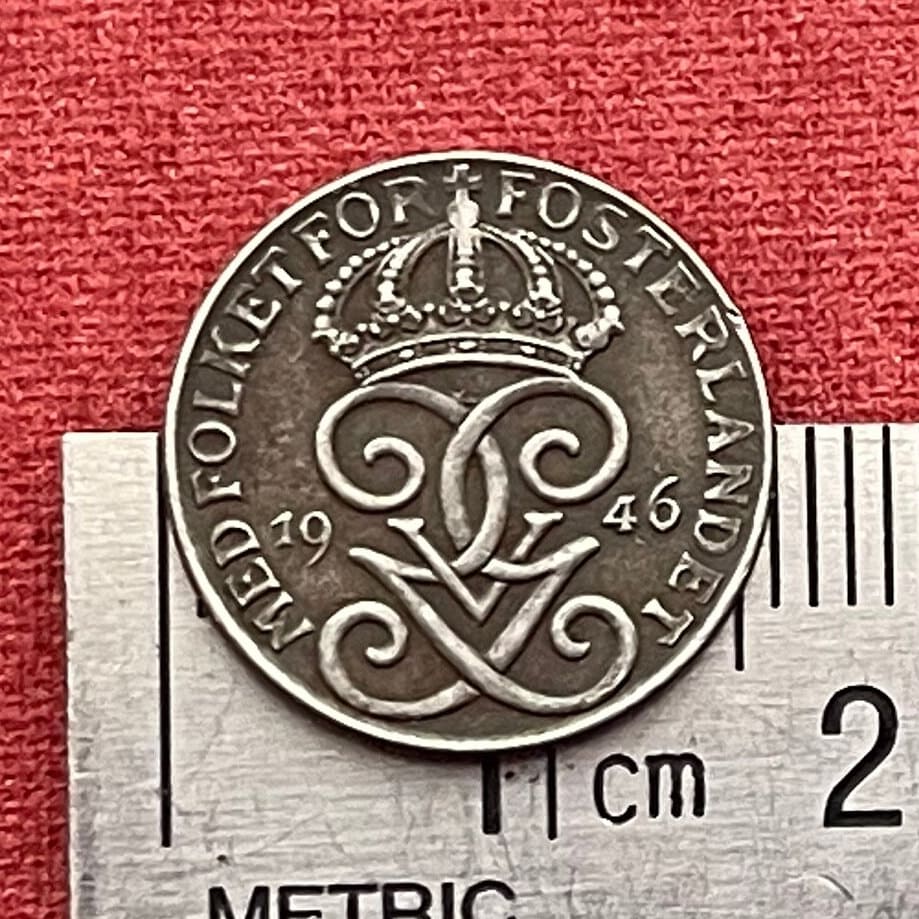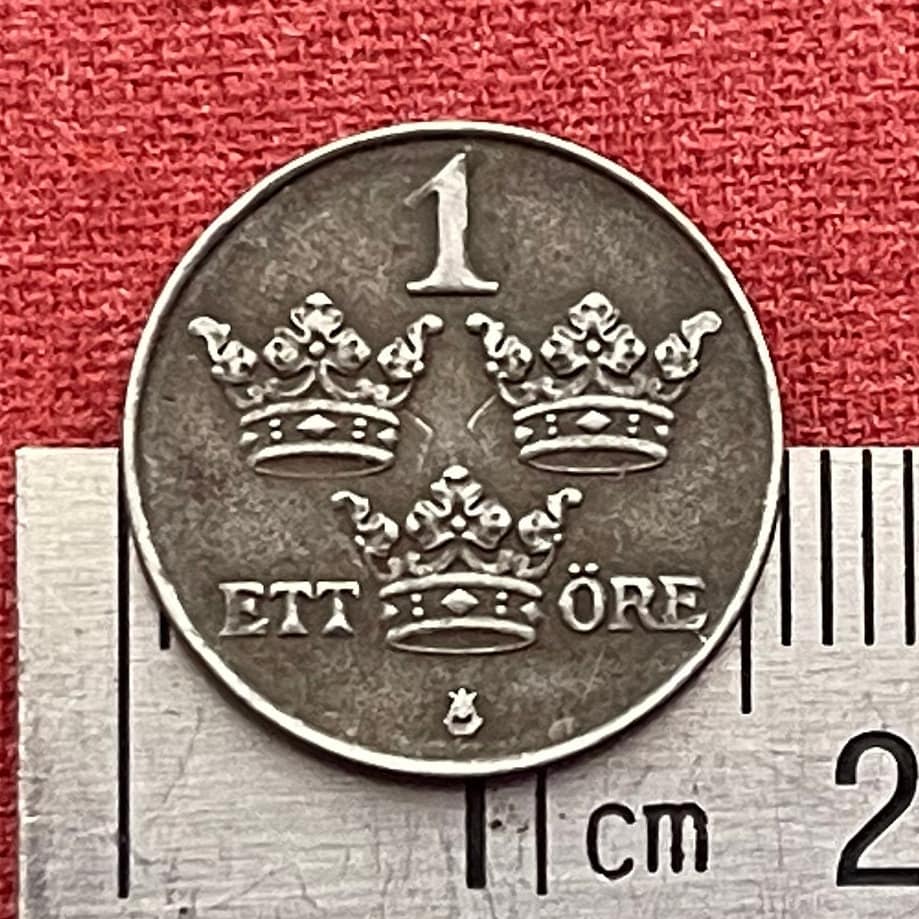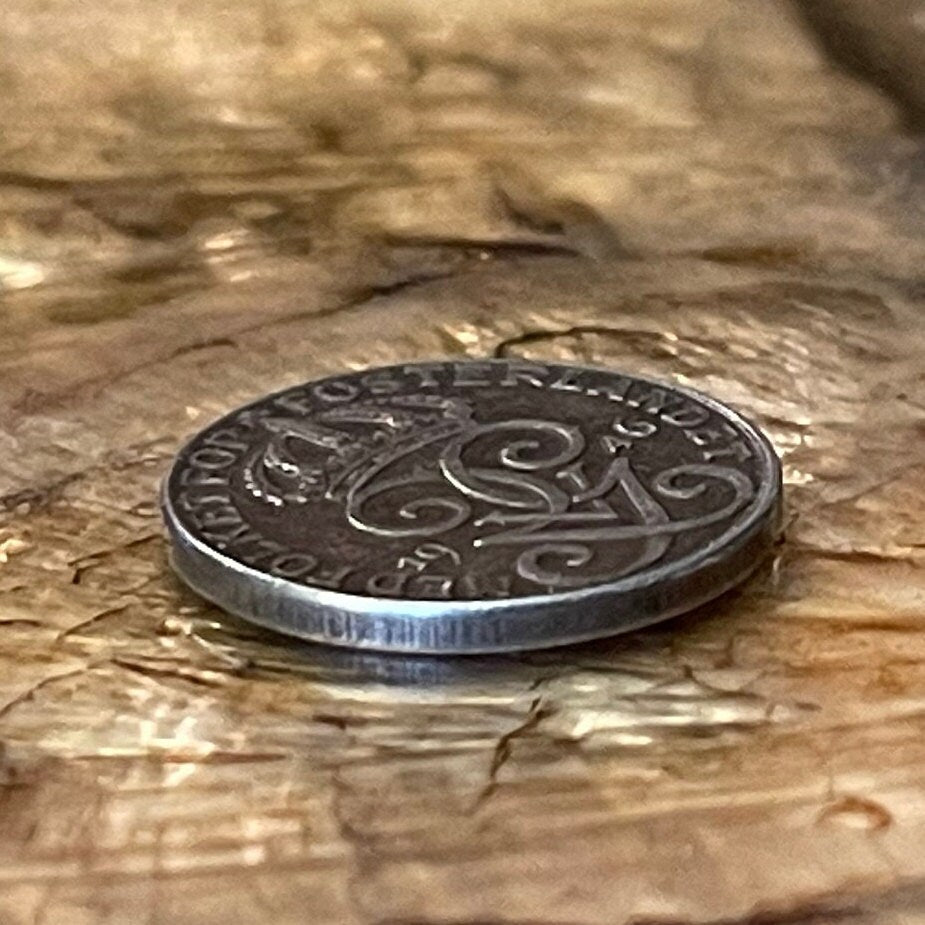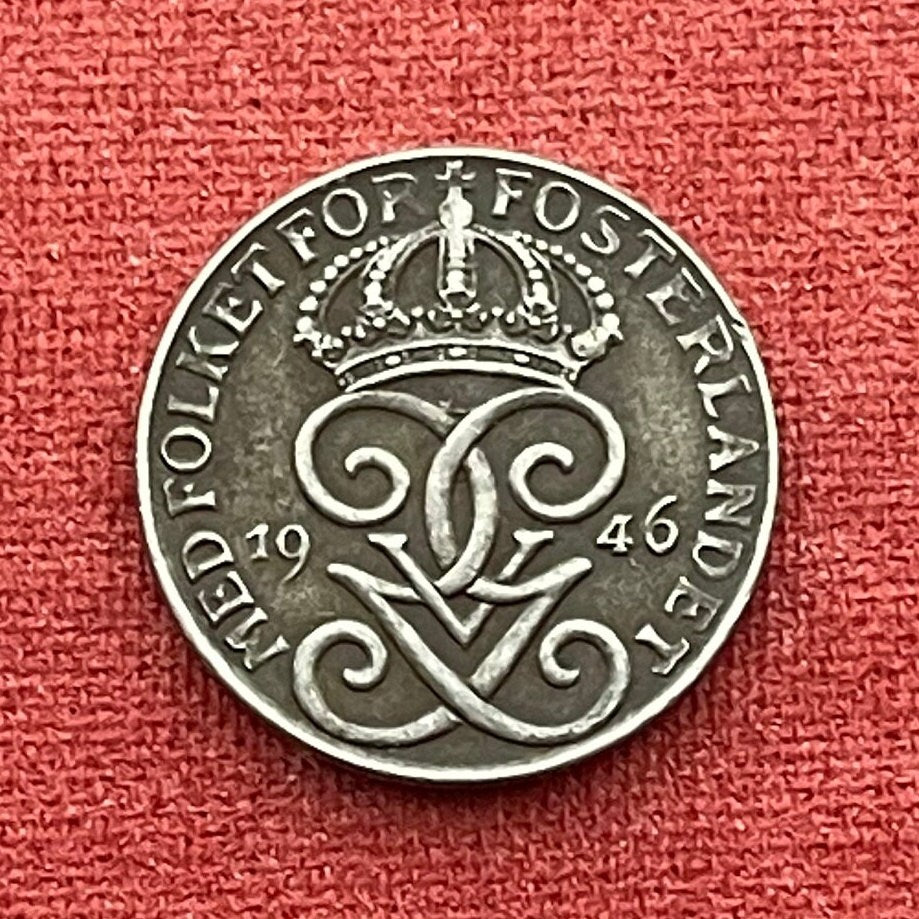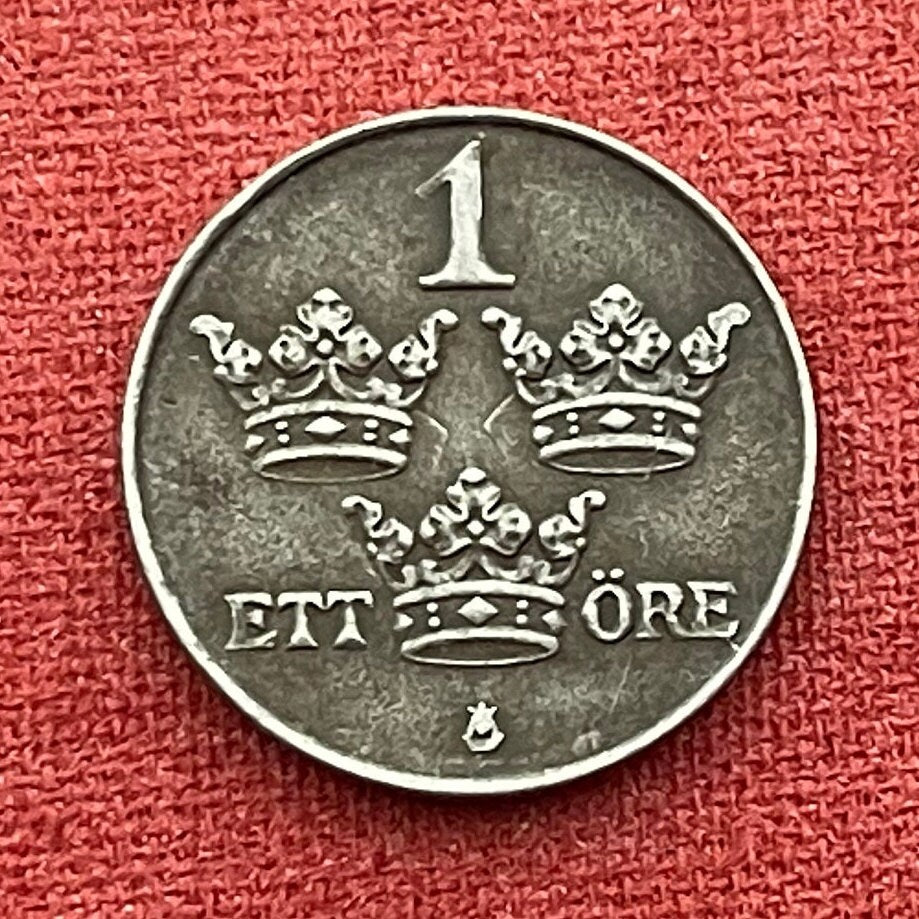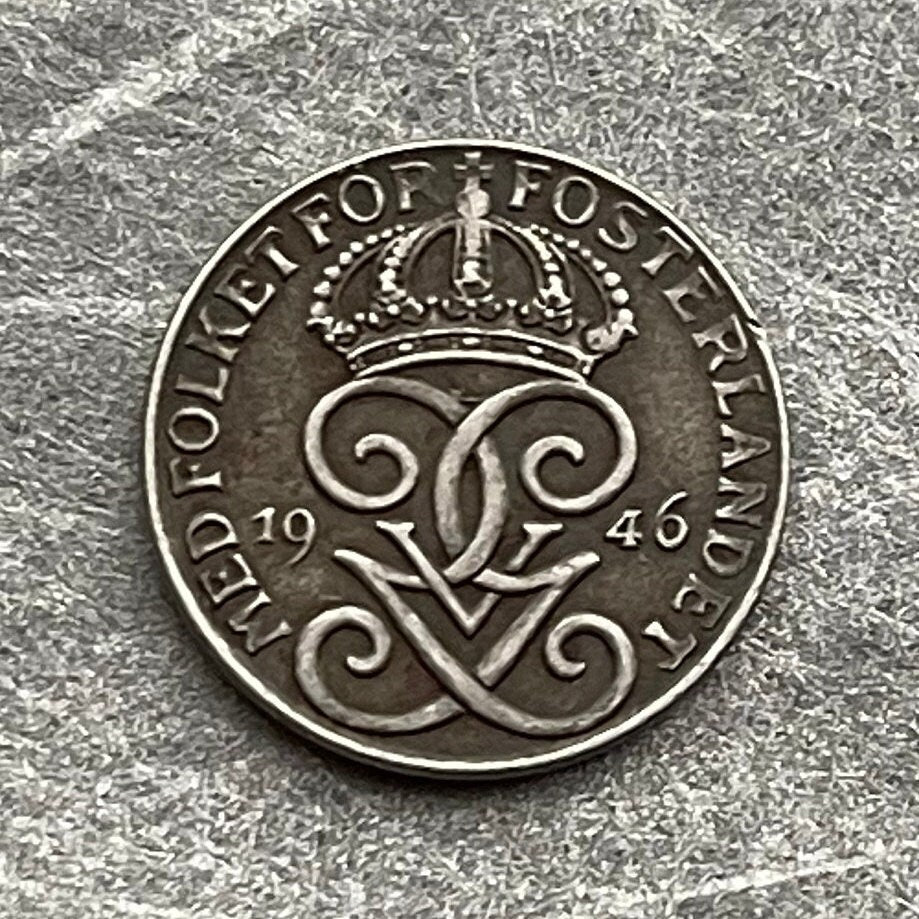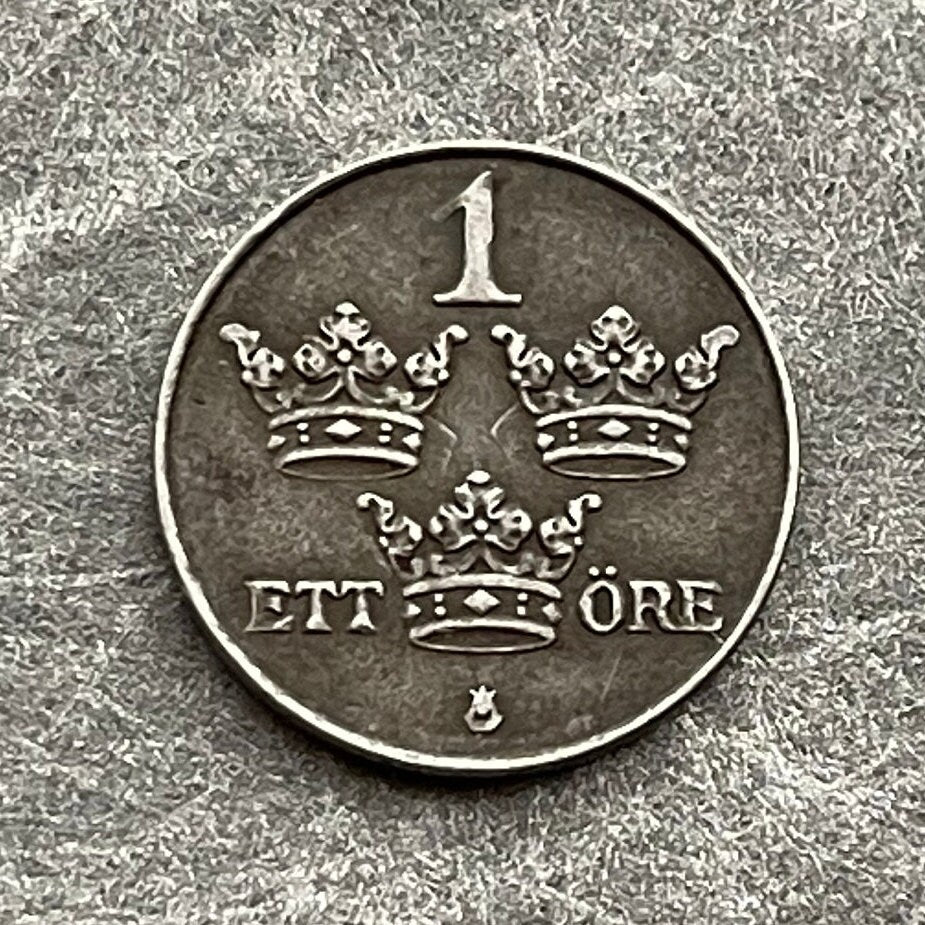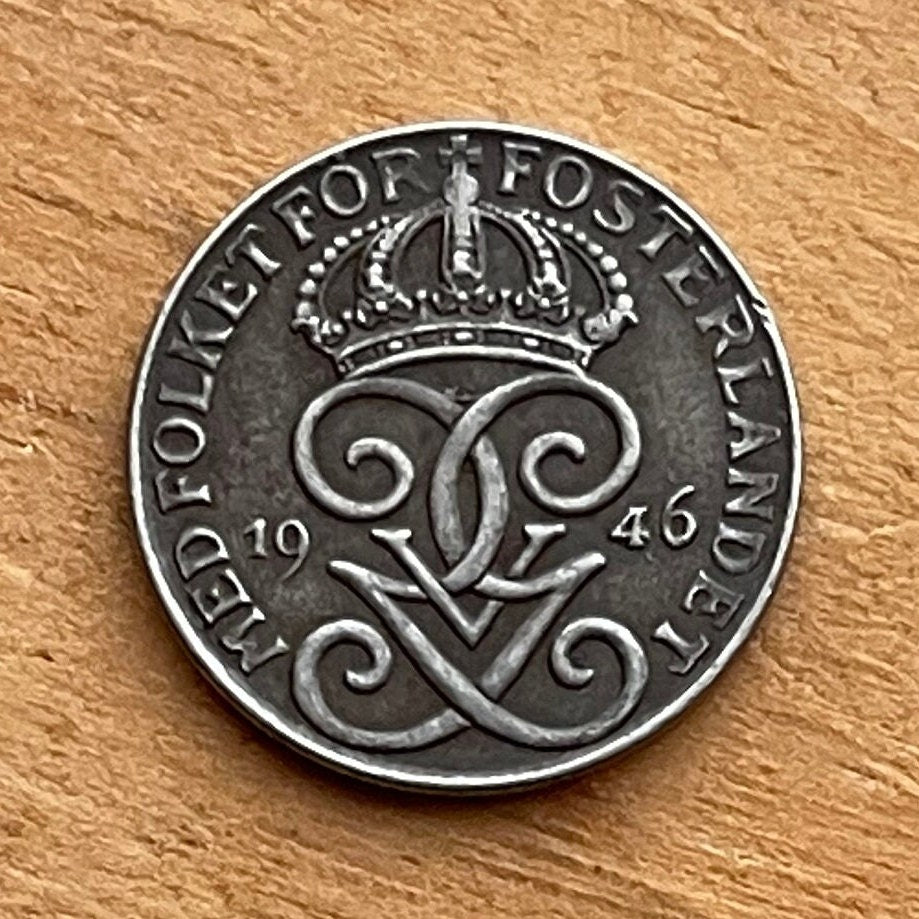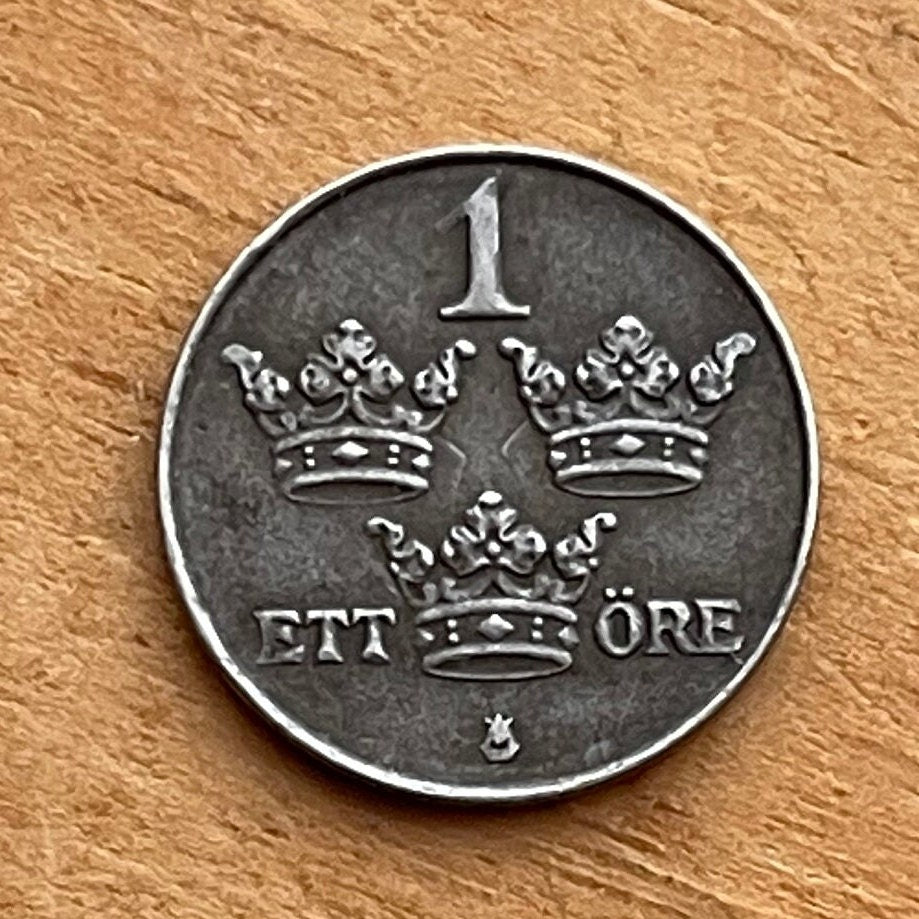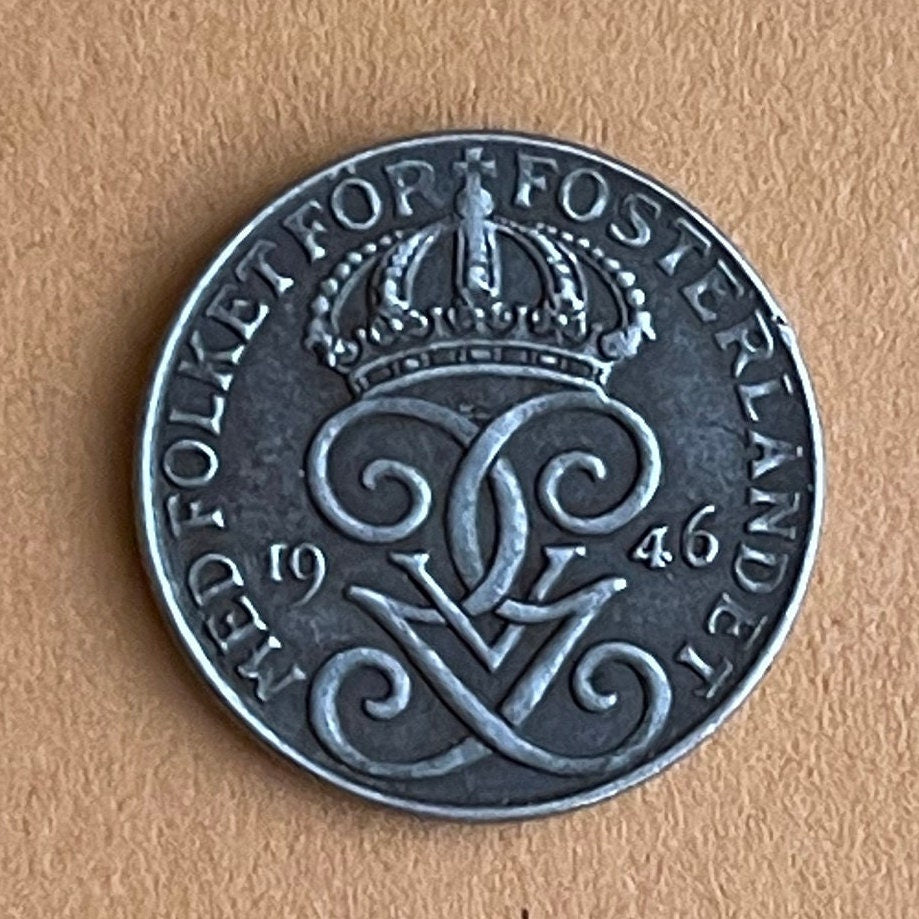elemintalshop
Crowned GGV Monogram 1 Öre (King Gustaf V) & Three Crowns Sweden Authentic Coin Money for Jewelry (Iron Coin) (Kalmar Union)
Crowned GGV Monogram 1 Öre (King Gustaf V) & Three Crowns Sweden Authentic Coin Money for Jewelry (Iron Coin) (Kalmar Union)
Couldn't load pickup availability
Crowned Double Monogram GGV of King Gustaf V & Three Crowns 1 Öre Sweden Authentic Coin Money for Jewelry and Craft Making (Iron Coin) (Kalmar Union)
Obverse: Crowned double monogram GGV of King Gustaf V of Sweden divides date. King's motto around rim
Lettering: MED FOLKET FÖR FOSTERLANDET
Translation: With the People for the Motherland
Reverse: The Three Crowns of Sweden divides value in letters at base of lower crown. Above the crowns there is the value in number and below the mintmark of Stockholm mint.
Lettering: 1 TVÅ ÖRE
Translation: One Öre
Comments: Coins in iron minted to replace those in bronze, due to metal shortages during and after World War II
Features
Issuer Sweden
King Gustaf V (1907-1950)
Type Standard circulation coin
Years 1942-1950
Value 1 Öre (0.01 SEK)
Currency Krona (1873-date)
Composition Iron
Weight 1.75 g
Diameter 16 mm
Thickness 1.4 mm
Shape Round
Technique Milled
Orientation Medal alignment ↑↑
Demonetized Yes
Number N# 4935
References KM# 810, Schön# 40
Wikipedia:
Gustaf V (Oscar Gustaf Adolf; 16 June 1858 – 29 October 1950) was King of Sweden from 1907 until his death in 1950. He was the eldest son of King Oscar II of Sweden and Sophia of Nassau, a half-sister of Adolphe, Grand Duke of Luxembourg. Reigning from the death of his father, Oscar II, in 1907 to his own death 42 years later, he holds the record of being the oldest monarch of Sweden and the third-longest rule, after Magnus IV and Carl XVI Gustaf. He was also the last Swedish monarch to exercise his royal prerogatives, which largely died with him, although they were formally abolished only with the remaking of the Swedish constitution in 1974. He was the first Swedish king since the High Middle Ages not to have a coronation and so never wore the king's crown, a practice that has continued ever since.
Gustaf's early reign saw the rise of parliamentary rule in Sweden although the leadup to World War I induced his dismissal of Liberal Prime Minister Karl Staaff in 1914, replacing him with his own figurehead, Hjalmar Hammarskjöld, the father of Dag Hammarskjöld, for most of the war. However, after the Liberals and Social Democrats secured a parliamentary majority under Staaff's successor, Nils Edén, he allowed Edén to form a new government which de facto stripped the monarchy of virtually all powers and enacted universal and equal suffrage, including for women, by 1919. Bowing fully to the principles of parliamentary democracy, he remained a popular figurehead for the remaining 31 years of his rule, although not completely without influence – during World War II he allegedly urged Per Albin Hansson's coalition government to accept requests from Nazi Germany for logistics support, refusing which might have provoked an invasion. His intervention remains controversial to date, although not in support of fascism or the Nazi regime; his pro-German and anti-Communist stances were more outwardly expressed during World War I and the Russian Civil War, and he vocally criticised violence and persecution against Jews, including intervening vocally against the Holocaust in Hungary in 1944, demanding that Miklos Horthy cease deportations and supporting Raoul Wallenberg's effort.
An avid hunter and sportsman, Gustaf presided over the 1912 Olympic Games and chaired the Swedish Association of Sports from 1897 to 1907. Most notably, he represented Sweden (under the alias of Mr G.) as a competitive tennis player, keeping up competitive tennis until his 80s, when his eyesight deteriorated rapidly. He was succeeded by his son, Gustaf VI Adolf.
*********
Wikipedia:
Three Crowns (Swedish: tre kronor) is the national emblem of Sweden, present in the coat of arms of Sweden, and composed of three yellow or gilded coronets ordered two above and one below, placed on a blue background. Similar designs are found on a number of other coats of arms or flags.
Use of the three crowns as a heraldic symbol of Sweden has been attested, in the Nordisk Familjebok, to the late 13th century, the three crowns first ringing the shield of Magnus Ladulås (1240-1290) and later appearing on the coins of Magnus Eriksson (1316-1374).
Use by Scandinavian unions
Union of Magnus Eriksson
Magnus used the symbols frequently, probably to mark his three kingdoms; Sweden, Norway and Scania. At the middle of the 14th century, neighbouring Denmark's severe financial problems caused most of the country to be pawned to German princes, primarily Gerhard III and John III. Since Denmark's king was forced into exile in 1332, the Danish Archbishop in Lund requested that Magnus become king of the Scanian provinces of Denmark. Magnus redeemed the pawn from John III and was sworn in as king of Scania the same year. Since he had also ambitions of redeeming the rest of Denmark, the crowns marked his dignity as king of three realms.
Although Denmark was reconsolidated under King Valdemar Atterdag in 1340 and regained its territory, and Norway left the union with Sweden in 1380, successive Swedish kings continued to use the union coat of arms with the three crowns. An alternative, less well-supported theory suggests that the three crowns are the three kingdoms in the traditional title of the Swedish king, king of Swedes, Goths and Wends. (the two last of which he held in competition with the Danish king). The Swedes-Goths-Wends represent a timely fifteenth-century re-interpretation of the already well-established emblem.
Kalmar Union
When the Kalmar Union, the personal union between Denmark, Norway and Sweden, was instituted by Queen Margrete I in 1397, the three crowns symbol reverted to its use as a symbol of the union of the three realms. Thus, her successor, Eric of Pomerania used a coat of arms quartered between the coats of arms of Denmark (three blue lions on a golden shield), Norway (a golden lion with an axe on a red shield) and Sweden (a golden lion on blue and white wavy stripes) plus the union mark with the three golden crowns on a blue shield, which is also the case for the following union Kings in the 15th century.
Use in post-Kalmar Union Sweden
Since the three crowns had been used in Sweden between the unions, both King Karl Knutsson Bonde who periodically drew Sweden out of the Kalmar Union, and King Gustav Vasa who terminated it in 1521, used the crowns - quartered with the lion - as a symbol of Sweden, and this has been the case to the present day. Since the 15th century the crowns have been regarded as the "main" arms of Sweden and thus can be used independently as the lesser coat of arms of the country.
The symbol is known to have been placed atop the mighty central tower of the castle Tre Kronor (Three Crowns) in Stockholm, destroyed by fire in 1697, no later than the early 16th century.
The Three Crowns Conflict
The royal arms of Denmark. Version used since 1972.
In the 1550s, King Gustav Vasa of Sweden found that the Danish King Christian III had added the three crowns to his own coat of arms. Because the three crowns had been a Swedish symbol since the 14th century and were used by Danish monarchs only during the Kalmar Union, Gustav interpreted Christian III's use of the symbol as a sign of intent to conquer Sweden and resurrect the union. Christian countered that since the monarchs of the union had used the three crowns, the symbol now belonged to both kingdoms and thus he had as much a right as the Swedish king to use it.
In Sweden, on the other hand, the Three Crowns were regarded as an exclusively Swedish symbol; this led to a long-lasting diplomatic conflict between the two countries, the so-called Three Crowns Conflict with Sweden accusing Denmark of imperialism by using a Swedish symbol, and Denmark accusing Sweden of monopolizing the use of a Scandinavian union symbol.
This conflict played a role at the outbreak of the Northern Seven Years' War in 1563. At the beginning of the 17th century the conflict was settled with both countries being allowed to use the Three Crowns in their coats of arms, although in Denmark it has a less prominent place in the shield, and is officially referred to as a heraldic reminder of the former Kalmar Union. Denmark has had this practice since 1546, a practice disputed by Sweden until 1613.
Share
